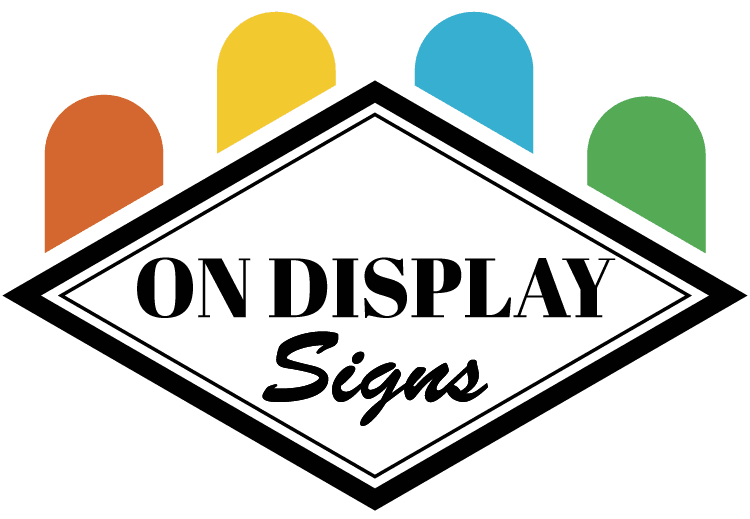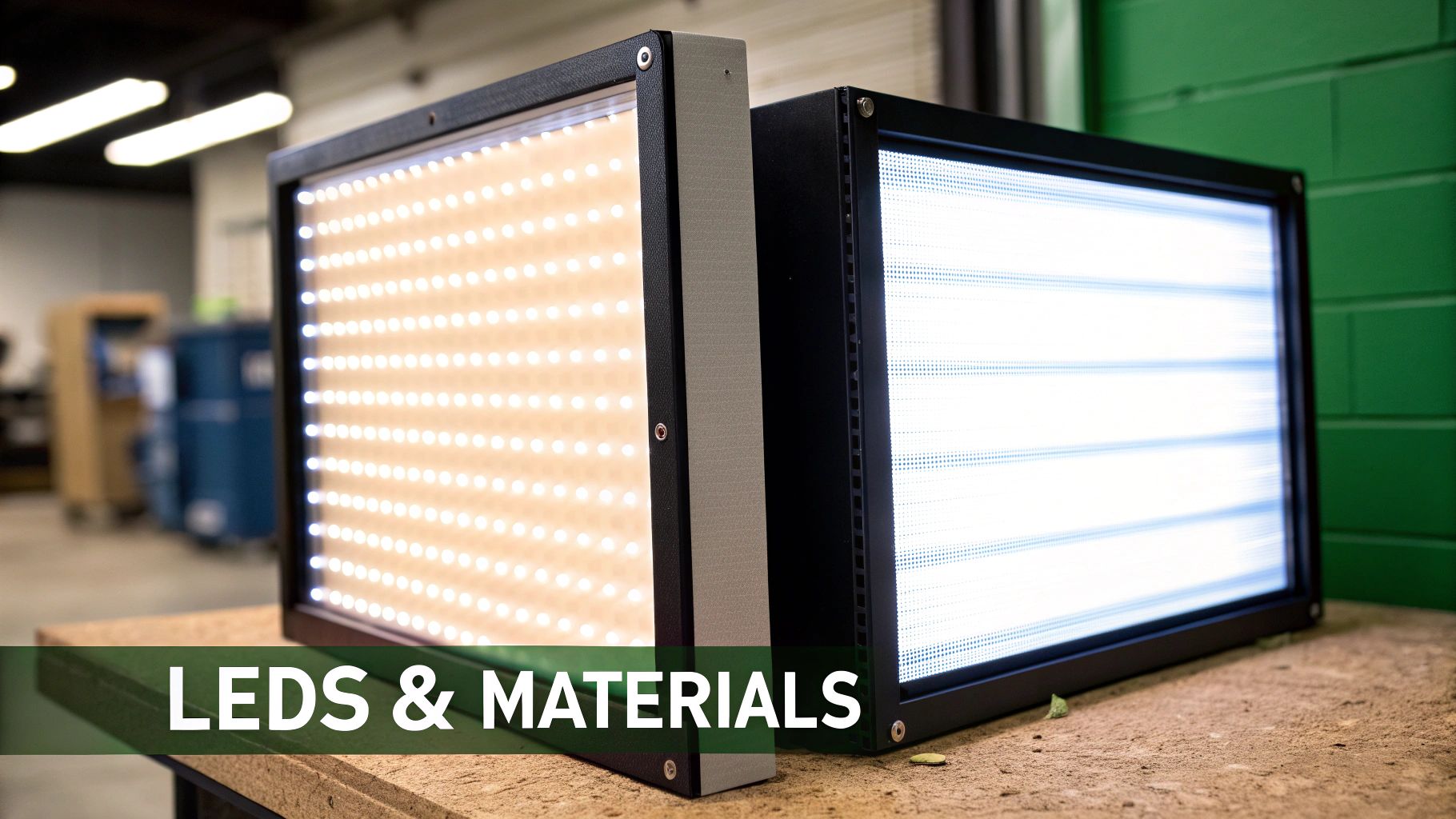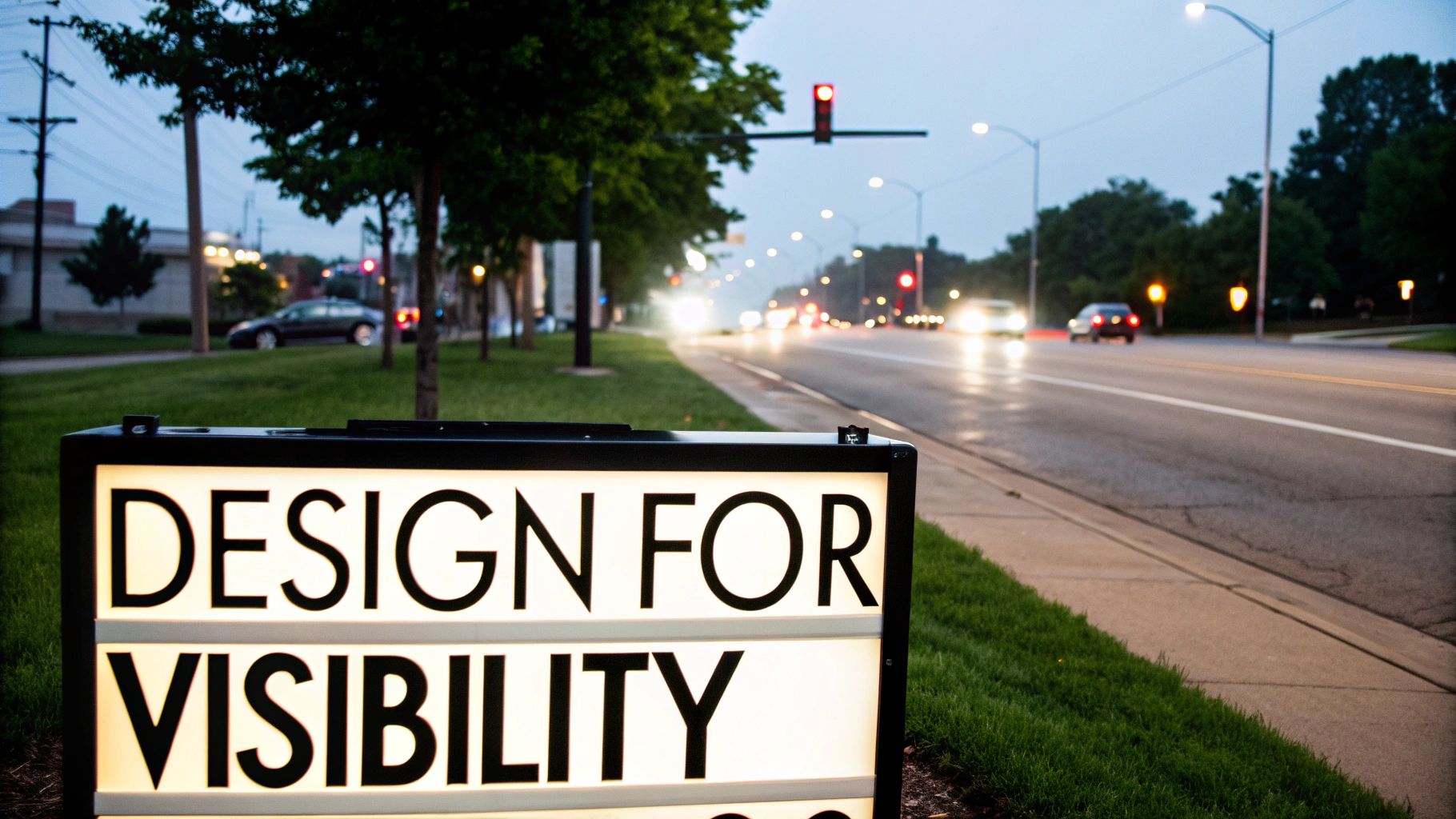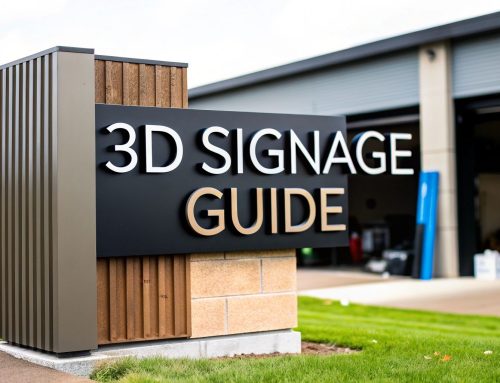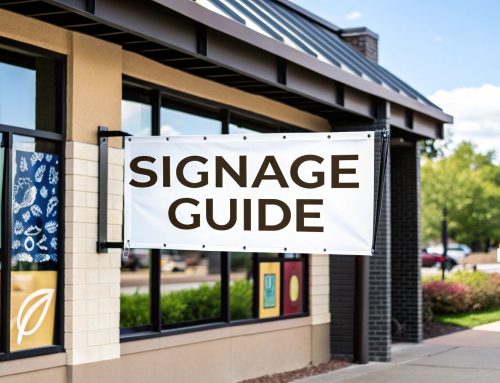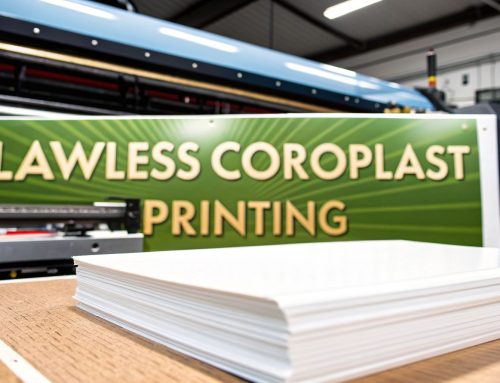An outdoor light box sign is your silent salesperson, working 24/7 to grab attention and pull customers through your door. Think of it as a constant beacon for your brand, turning your location into a landmark that’s impossible to miss, day or night.
Your Guide to a Light Box Outdoor Sign
Imagine a lighthouse on a stormy coast. That powerful beam slices through the darkness, guiding ships to safety. A light box outdoor sign does the same thing for your business—it’s a glowing guide that cuts through the visual noise of a busy street, drawing customers right to you.
Unlike a standard sign that fades into the background after sunset, an illuminated sign never stops working. It’s always on, always marketing, and always cementing your brand in the minds of everyone who passes by.
The Power of Constant Visibility
For a practical example, consider a local coffee shop that closes at 5 PM. A regular, unlit sign becomes invisible once the sun goes down. But a light box sign, with its warm, inviting glow, keeps working. It catches the eye of someone driving home from a late shift, planting a memorable image of where they can grab their morning coffee tomorrow. That’s the real-world power of being seen around the clock.
Actionable Insight: A well-designed light box sign does more than just show your name. It broadcasts your presence and professionalism 24/7, effectively doubling your marketing hours without you lifting a finger.
Core Benefits for Your Business
Beyond just being seen, these signs deliver real, tangible benefits that help your business grow. They're a key player in your advertising toolkit, though there are many other great options. You can explore more in our complete guide to the different types of outdoor business signs in our complete guide.
When it comes to light boxes, the advantages are undeniable:
- Increased Foot Traffic: A bright, well-lit sign is a natural magnet for attention. It encourages those impulse stops from people who might have driven right past an unlit storefront. A pizzeria, for example, can capture late-night diners simply because its glowing sign signals it's open for business.
- Enhanced Brand Recognition: Consistency is king when it comes to branding. When people see your glowing logo day after day, it builds familiarity and trust, turning your business into a fixture of the local community.
- Competitive Advantage: On a crowded commercial strip, a brilliant light box sign is your secret weapon. It immediately makes you stand out from competitors with dimmer or non-existent signage, signaling that you’re a modern, professional, and thriving business.
Choosing the Right Type of Light Box Sign
Picking the right outdoor light box sign isn’t just about buying a product—it's about hiring the right ambassador for your brand. With so many shapes, mounting styles, and structures out there, the real goal is to find the perfect match for your specific location and what you want to achieve. Each type has a job to do, and the right one will make sure your message hits home.
This isn't just a small detail; it's a major business decision. The global market for these signs is booming, recently valued at around USD 1,235.75 million and expected to climb to USD 2,240.45 million by 2032. That explosion shows just how vital it is to have visible, impossible-to-ignore advertising in today's crowded marketplace.
Matching Sign Structure to Your Brand Identity
The physical shape of your sign is the first thing people see. Think of it as your business's first handshake—it needs to instantly communicate your brand's personality and set the tone for what customers can expect.
- Cabinet Signs: These are the reliable workhorses of the sign world. Usually rectangular, they give you a big, clean canvas that's perfect for your business name and logo. For example, a retail store in a strip mall would use a long cabinet sign to be seen from one end of the parking lot to the other.
- Round Signs: A circular light box has a more classic, almost boutique feel. It’s a fantastic choice for a hip coffee shop or a specialty store that wants to create a charming, memorable vibe on a busy sidewalk.
- Custom-Shaped Signs: If you’ve got a unique logo or brand icon, a custom-shaped sign is the ultimate way to stand out. A practical example would be a guitar-shaped sign for a music store or a coffee cup sign for a café—these designs are instantly recognizable and stick in your memory.
As the diagram below shows, an effective outdoor sign really has three jobs to do for your brand.
It has to grab attention, establish your brand identity, and ultimately, get people through your front door.
Selecting the Best Mounting Style for Your Location
How your sign is attached is just as important as how it looks. The mounting style you choose depends on your building's architecture, how far you are from the street, and what your local zoning laws allow. Getting this right means your sign gets seen by the right people, at the right time.
Actionable Insight: A sign's mounting isn't just a technical detail; it's a strategic decision. The right placement can mean the difference between being a local landmark and being completely overlooked.
For a business right on a busy sidewalk, a wall-mounted sign is the obvious choice. It attaches flat against the building, clearly identifying your spot for pedestrians without getting in their way.
But what if your business is set back from the road or tucked away in a huge shopping center? That's when you need to go vertical. A pylon sign—a tall, freestanding structure that often has space for multiple tenants—is perfect for grabbing attention from a distance. For instance, a hotel near a highway would use a huge pylon sign to catch the eye of drivers speeding by.
In a similar way, a monument sign is a lower-profile, freestanding sign that sits near the entrance to a property. These are ideal for professional offices, business parks, or upscale shopping centers because they give off a feeling of permanence and class. While these traditional options are effective, some businesses are looking for something more dynamic. You can find out more about high-tech options in our guide to digital and LED signs.
Outdoor Light Box Sign Type Comparison
To help simplify the decision, this table breaks down the most common types of outdoor light box signs, highlighting what they're best for and what you can expect in terms of cost.
| Sign Type | Best Use Case | Relative Cost | Primary Benefit |
|---|---|---|---|
| Wall-Mounted | Storefronts with direct pedestrian or street traffic | Moderate | High visibility for passersby, direct brand identification |
| Pylon Sign | Businesses set back from the road, shopping centers, hotels | High | Maximum visibility from a long distance and for fast-moving traffic |
| Monument Sign | Business parks, professional offices, upscale retail centers | High | Creates a prestigious, established, and permanent impression at eye-level |
| Under-Canopy | Pedestrian-heavy areas like downtowns and malls | Low-Moderate | Catches the eye of people walking directly below, reinforces branding |
Each of these styles serves a different strategic purpose. The key is to analyze your location's sightlines and your target audience's journey to choose the one that will work hardest for your business.
Selecting the Best Materials and Illumination
The durability and performance of your light box outdoor sign really boil down to what’s inside it. Picking the right materials isn't just a minor detail; it’s a critical decision that will dictate how your sign looks, how much it costs to run, and how long it ultimately lasts.
Think of your sign's materials as its armor and its lighting as its voice. Both have to be tough enough to handle whatever the weather throws at them while being powerful enough to get noticed, day or night.
Let's break down the choices you'll need to make.
Choosing the Right Sign Face Material
The sign face is the canvas for your brand—the translucent panel that shows off your graphic. It needs to be rugged enough to endure the elements but clear enough to let light shine through evenly and make your colors pop. The two workhorses for this job are acrylic and polycarbonate.
- Acrylic: Known for its brilliant clarity and glossy finish, acrylic makes backlit colors look incredibly sharp. It’s a fantastic, budget-friendly choice for many standard signs, especially where physical impact isn't a huge worry.
- Polycarbonate: If your sign is going up in a high-traffic area or a place with harsh weather, polycarbonate is the undisputed champ. It’s up to 30 times more impact-resistant than acrylic, making it practically shatterproof against everything from vandalism to storm debris.
For a practical example, a boutique on a quiet side street would do just fine with an acrylic sign. But a fast-food joint right off the highway should absolutely invest in a polycarbonate face to fend off potential damage and keep the lights on.
Actionable Insight: Your sign's face is its first line of defense. Investing in a durable material like polycarbonate is like buying insurance against damage, ensuring your brand's message remains clear and uninterrupted, regardless of the environment.
The Frame: The Foundation of Your Sign
The cabinet, or frame, is what holds the entire sign together. While you can find frames made from different materials, aluminum is the industry go-to for good reason. It’s lightweight, which makes installation easier, but it's also strong and naturally resists rust and corrosion.
For businesses wanting an exceptionally durable and modern look, it’s worth exploring different framing structures. You can learn more about how advanced materials are used in our overview of aluminum composite signage. This decision locks in your sign's structural integrity for years.
LED Versus Fluorescent: A Clear Winner Emerges
At the heart of any light box sign is its light source. For years, fluorescent tubes were the standard, but modern LED (Light Emitting Diode) technology has completely changed the game. While a fluorescent sign might seem cheaper upfront, LEDs deliver a far better return over the life of the sign.
This isn't just a small shift; it’s part of a huge industry trend. The wider outdoor printed signage market is on track to grow from USD 34.65 billion to a massive USD 57.09 billion by 2030, and that growth is powered by tech upgrades like the switch to LEDs.
Let’s put the two head-to-head:
| Feature | LED Illumination | Fluorescent Illumination |
|---|---|---|
| Energy Usage | Uses up to 80% less energy | High energy consumption |
| Lifespan | 50,000-100,000 hours (11-22 years at 12 hrs/day) | 10,000-20,000 hours (2-4 years at 12 hrs/day) |
| Maintenance | Minimal; no bulb changes for over a decade | Frequent bulb and ballast replacements |
| Brightness | Bright, even light with no "hot spots" | Can create uneven lighting and dim over time |
| Durability | Solid-state lighting, resistant to shock/vibration | Fragile glass tubes, sensitive to cold |
When you're deciding on illumination, think about the long-term savings. Looking into energy-efficient lighting options gives you a better handle on making the smartest choice. When you factor in lower energy bills and almost zero maintenance, LED becomes the obvious winner for just about every business.
Designing Your Sign for Maximum Impact
A great light box outdoor sign is so much more than a box with a light inside. It’s a deliberate piece of visual communication, and every choice you make—from the colors to the fonts—will decide whether your sign becomes a beacon for customers or just more background noise.
The number one rule for effective sign design is simple: clarity trumps creativity. That complex, artistic logo might look incredible on your business card, but it can easily turn into an unrecognizable blob when it's lit up from behind at night. The real goal is a design that people can read and recognize in a split second.
The Science of Backlit Color and Contrast
Colors look completely different when you shine a bright light through them. A subtle, sophisticated color palette that looks sharp on a computer screen can appear washed out and weak when backlit. To make your sign pop, you have to think in terms of high contrast.
Think of it like putting on a stage show. Bold, saturated colors are your lead actors, grabbing all the attention. Pale, low-contrast shades are just background extras who fade away as soon as the lights come up.
Actionable Insight: The most common mistake we see is choosing colors that are too similar. A light gray logo on a white background, for instance, will become almost invisible once illuminated. A design built on a weak foundation of contrast is doomed from the start.
For the biggest impact, stick with these tried-and-true combinations:
- Dark on Light: A black, dark blue, or deep red logo on a white or pale yellow background gives you excellent legibility, day or night.
- Light on Dark: A bright white or vivid yellow design on a black, navy, or forest green background is just as powerful, creating a striking glow that commands attention after dark.
Choosing Fonts and Graphics for Readability
When it comes to the fonts on your sign, your two best friends are simplicity and boldness. Forget about thin, ornate, or script-style fonts—they're incredibly difficult to read from a distance and tend to blur together when lit.
Your best bet is to use clean, sans-serif fonts like Helvetica, Arial, or Futura. Their even stroke thickness ensures every letter is crisp and distinct, whether someone’s looking from 50 feet away or 500. While they're different materials, many of the core ideas about clarity overlap with what you'd see in a guide to choosing the best fonts for metal signs.
The same logic applies to your graphics. A clean, simple logo is far more effective than a detailed illustration. The goal is instant recognition, not a piece of art that people have to stop and inspect. To make sure your sign is as effective as possible, it helps to understand the broader principles of commercial design and aesthetics that make a property look its best.
Getting the Size and Scale Right
Figuring out the right size for your light box sign isn’t just about measuring the empty space on your wall. You have to consider the environment to make sure your sign is not just seen, but actually read.
Think about these key factors:
- Viewing Distance: How far away will your target audience be?
- Traffic Speed: Are people strolling past on foot or driving by at 45 mph?
- Zoning Laws: Your city or county will definitely have rules about how big your sign can be.
Here's a handy rule of thumb: for every 10 feet of viewing distance, you need at least one inch of letter height. So, if you want your sign to be legible from 100 feet away, your letters need to be a minimum of 10 inches tall. This simple calculation can save you from investing in a sign that’s too small to do its job.
Navigating Permits and Installation
Getting your new light box outdoor sign designed and built is the fun part, but the final steps—permitting and installation—are where your hard work finally pays off. This phase can feel a little intimidating with all the paperwork and local rules, but it’s actually a pretty straightforward process with the right partner.
Think of it as the foundation. You wouldn’t build a house on shaky ground, and you shouldn't install a premium sign without getting the official green light. Trying to skip this step is a recipe for disaster, often leading to huge fines and even an order to tear the whole thing down. Doing it right the first time protects your investment and ensures your sign becomes a lasting part of your storefront.
Demystifying the Sign Permitting Process
Before anyone can drill a single hole, you need approval from your local city or county. This whole process is in place to make sure your sign is safe, meets zoning laws, and complies with all the electrical codes. The exact rules change from town to town, but the basic steps are nearly always the same.
A good sign company will handle most of the permit application for you, but knowing what they’ll need helps speed things up. You'll typically be asked for:
- Site Plan: A simple map showing your property lines and the exact spot where the sign will go.
- Sign Design Renderings: Detailed mockups that show what the sign looks like, including its dimensions, colors, and materials.
- Engineering Specifications: Official documents that prove the sign is built to handle local weather, like strong winds or heavy snow.
- Landlord Approval: If you lease your space, you'll need a signed letter from the property owner giving their okay.
Local regulations will often have rules about the sign’s maximum size, how bright it can be (so it doesn’t distract drivers), and how far it can stick out from the building. For a closer look at what to expect, our guide on sign permit requirements breaks down the common hurdles.
A Practical Walkthrough for a Small Business
Let’s use a practical example: you’re opening a small coffee shop and you’ve settled on a warm, inviting light box sign to hang over the door. The first thing your sign contractor will do is check the local zoning code to make sure a sign of that size and type is even allowed in your commercial area.
From there, they’ll put together a permit package. This includes the electrical diagrams, a photo showing what the sign will look like on your building, and an engineer's stamp certifying its safety. After they submit everything to the city planning department and pay the fees, an inspector might swing by for a quick look. Once they sign off, you’re cleared for installation.
Professional Installation and Maintenance Essentials
Once you have that permit in hand, it’s time for the pros to take over. This is definitely not a DIY job. Professional installers are trained to manage high-voltage wiring, securely mount what is often a very heavy sign, and make sure every connection is sealed tight against the weather.
After your sign is up and shining, a little bit of upkeep will keep it looking sharp for years.
Actionable Insight: Your light box sign is a long-term asset, but like any asset, it performs best with regular upkeep. A few simple checks each season can prevent costly repairs and keep your brand shining brightly.
Here’s a simple checklist to keep your sign in top shape:
- Immediate Post-Installation Check: Do a quick walk-around. Look for any flickering lights, visible gaps, or loose panels. Make sure the light is perfectly even across the whole sign face.
- Quarterly Cleaning: Use a little mild soap and water to gently wipe down the sign face. Getting rid of the road grime and dust that builds up makes a huge difference in brightness.
- Semi-Annual Inspection: Give it a closer look. Check for any small cracks, peeling vinyl, or moisture getting inside the box. It’s also a good time to clear out any bird nests or insect hives that could damage the wiring.
- When to Call a Pro: If you see sections that are dimming, hear any strange buzzing sounds, or notice exposed wires, don’t hesitate. Call your sign company right away for a professional service check.
Frequently Asked Questions
When you're ready to invest in a new light box outdoor sign, you’re bound to have questions. It’s a big decision, and you need straight answers on cost, durability, and how the sign can grow with your business. Here are the things we get asked most often.
How Much Does a Light Box Outdoor Sign Cost?
This is the big one, and the honest answer is: it depends. The final price tag is a mix of size, materials, design complexity, and lighting.
A simple, smaller wall-mounted sign might land in the $500 to $1,500 ballpark. But if you’re thinking bigger, like a double-sided pylon sign for a shopping center or an elegant monument sign, the investment can range from $5,000 to over $20,000. Things like choosing ultra-tough polycarbonate over standard acrylic or going for a custom shape will nudge the price, too. Always ask for a detailed quote that breaks everything down—the sign, the professional installation, and any permit fees.
How Long Do LED Light Box Signs Last?
Modern LED light boxes are built to last. The LED modules themselves are workhorses, rated for an incredible 50,000 to 100,000 hours of continuous use.
Let's use a practical example to put that in perspective. For a sign running 12 hours a day, every single day, you're looking at a staggering 11 to 22 years of life from the lights alone. It’s a true long-term investment in your brand’s visibility.
While the LEDs are built to go the distance, other parts, like the power supply tucked inside, might need a swap around the five- to seven-year mark. But with just a little basic care, the sign’s cabinet and face will easily last for decades, protecting your investment for years to come.
Can I Change the Graphic On My Light Box Sign?
Absolutely. This is one of the best things about a light box sign—it’s not a one-and-done deal. The ability to refresh your message without starting from scratch is a huge advantage.
The sign face is designed to be swapped out. It's usually a panel of acrylic or polycarbonate with your graphics printed on a translucent material. A professional sign company can easily slide out the old panel and pop in a new one. This is perfect for:
- Businesses going through a full rebrand.
- Companies that update their name or logo.
- Retail stores that want to advertise seasonal sales or special offers.
Swapping out the graphic is way more affordable than buying a whole new sign, giving you the freedom to keep your marketing fresh as your business evolves.
Ready to make your brand impossible to ignore? The experts at On Display Signs, Inc. manage every step of the process, from design and permitting to professional installation and maintenance, ensuring your business shines bright. Explore our custom light box sign solutions and get your project started today.
